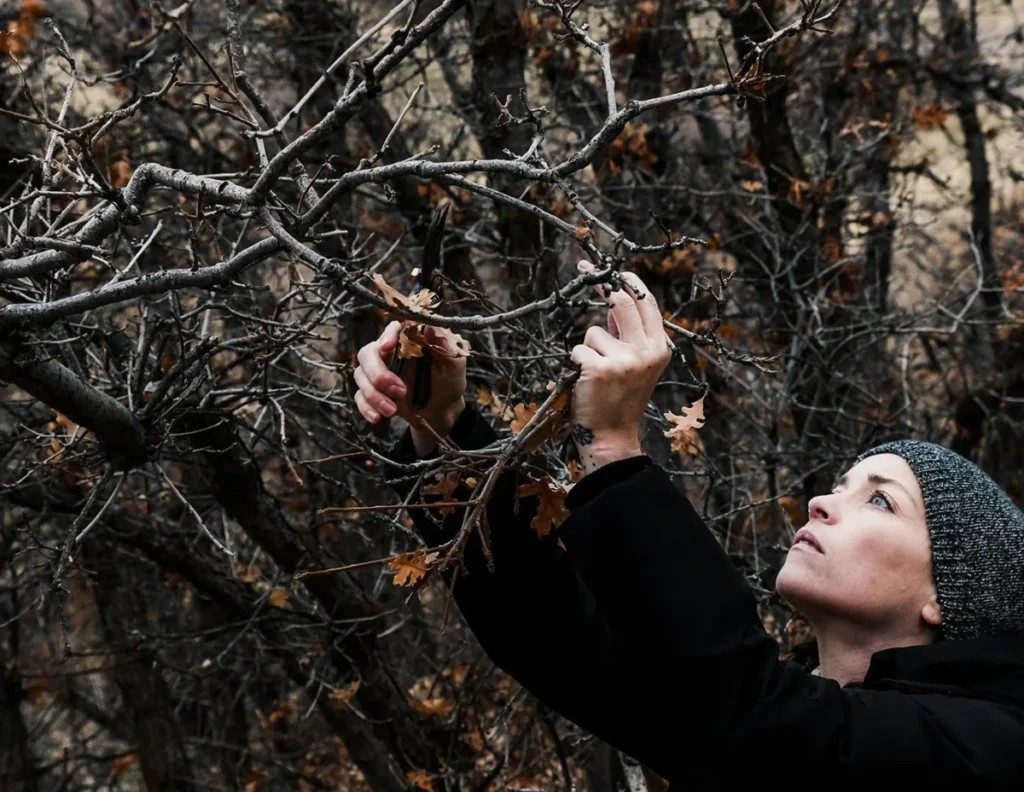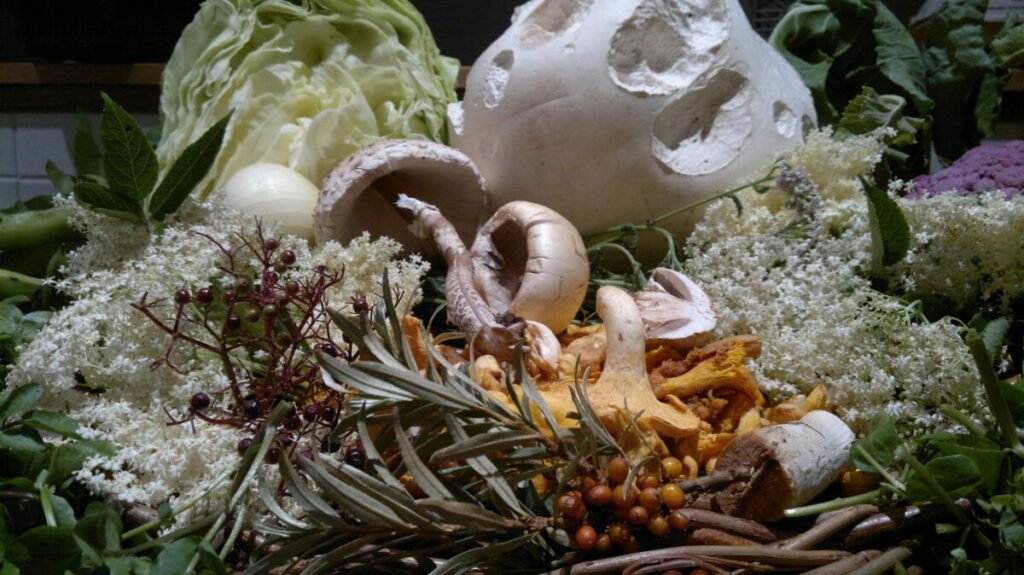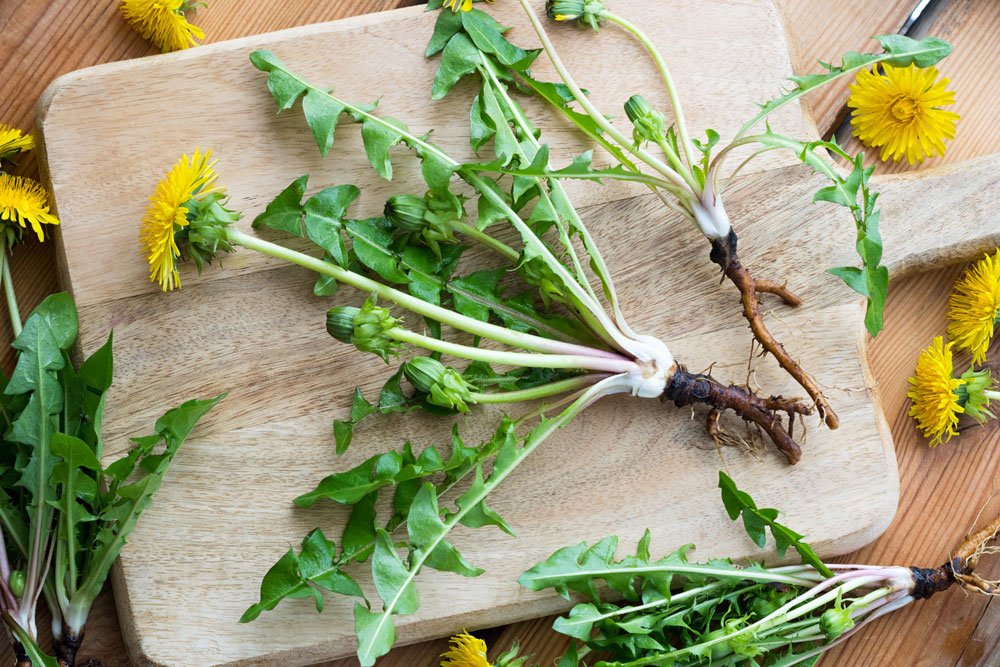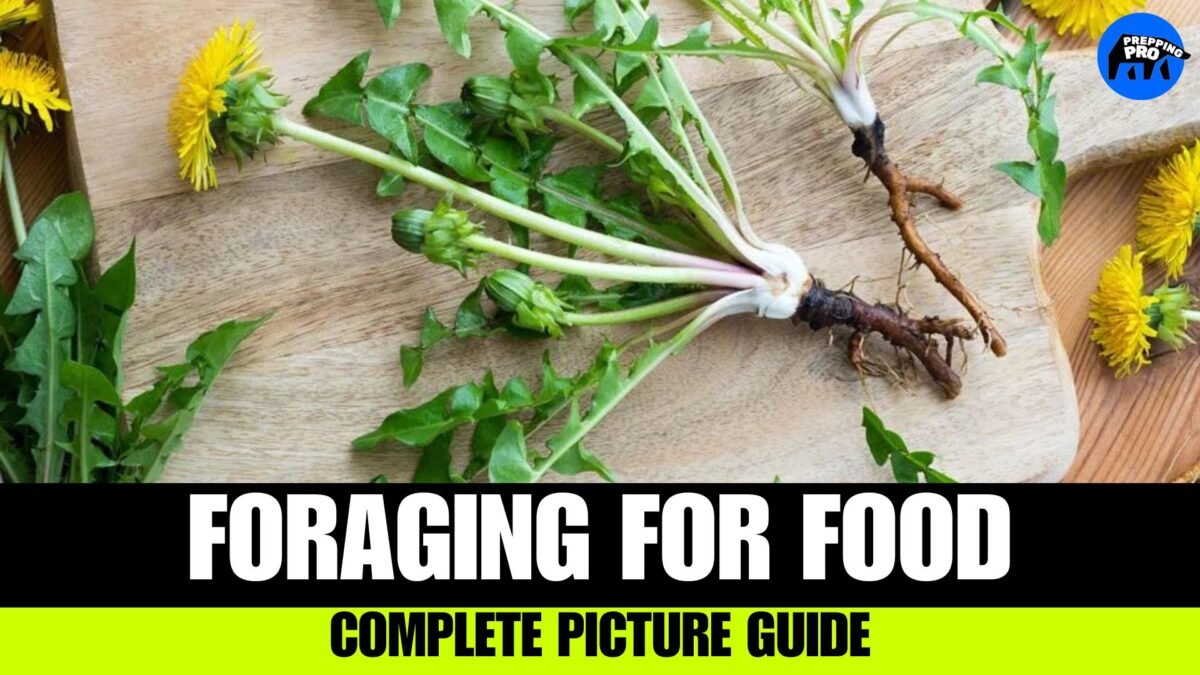In times of crisis or when resources are scarce, knowing how to forage for emergency food can be a lifesaving skill.
By learning to identify edible plants and utilize them for sustenance, you can turn nature’s pantry into your survival kit.
In this article, I will provide you with essential information and techniques to help you master the art of foraging for emergency food.
Key Takeaways:
- Foraging for emergency food is a valuable skill in times of crisis or resource scarcity.
- Learning to identify edible plants and utilize them for sustenance is essential.
- By mastering the art of foraging, you can transform nature’s pantry into your survival kit.
- This article will provide you with essential information and techniques to help you become a proficient forager.
- Stay tuned for expert insights, tips, and real-life experiences from experienced foragers.
Table of Contents
Foraged for Food Picture Guide
Below are the top twelve edible options that can be foraged for food.
5 Foraged For Food Hacks
Know the Seasons: Understanding what grows when is key to foraging success. Different plants have specific seasons, so a monthly foraging guide can help you plan your forays. This ensures you know what to look for and when, optimizing your haul.
Use Technology Wisely: Leverage apps and online communities dedicated to foraging. These can help you identify plants, mushrooms, and other edibles. Some apps even provide detailed information on the edibility, habitat, and preparation of foraged items.
Start Small and Local: Focus on learning a few edible plants and mushrooms that grow abundantly in your area. Mastery of a handful of species is better than a superficial knowledge of many. This approach reduces the risk of misidentification.
Respect the Environment: Always forage sustainably. Take only what you need, never deplete a single area of its resources, and be mindful of protected species. This ensures that the plants continue to thrive for future foragers.
Prepare Properly: Learn the best ways to clean, prepare, and preserve your foraged finds. Some items may require specific preparation methods to be safe and enjoyable to eat. Understanding these methods can greatly enhance your foraging experience and the quality of your meals.
The Importance of Self-Reliance in Foraging

In times of emergencies or scarcity, foraging for food becomes a crucial survival skill.
And at the heart of this skill lies the concept of self-reliance.
By honing your foraging abilities, you gain the power to source your own food, ensuring your survival even in the most challenging situations.
Foraging for food during emergencies requires not only knowledge but also the right techniques.
In this section, I will guide you through the importance of self-reliance in foraging and provide essential tips and best practices to help you navigate through emergency situations.
Understanding the Value of Self-Reliance
Self-reliance gives you the confidence and ability to take control of your own sustenance.
By developing your foraging skills, you no longer have to depend solely on external resources or wait for help to arrive during emergencies.
Instead, you become self-sufficient, capable of finding food sources in your immediate surroundings and utilizing them to sustain yourself.
Emergency foraging techniques empower you to adapt to the ever-changing circumstances and make the most out of your environment.
By understanding the local flora, identifying edible plants, and practicing responsible harvesting, you can ensure a constant supply of food, even when resources are scarce.
Essential Tips for Emergency Foraging
When foraging for food during emergencies, it is important to keep a few key tips in mind:
- Know your environment: Familiarize yourself with the local plant species and their edible parts.
- Learn from experts: Take advantage of emergency food foraging guides and resources to enhance your knowledge.
- Practice caution: Only consume plants you can confidently identify as safe for consumption.
- Harvest responsibly: Take only what you need and avoid damaging the ecosystem.
- Experiment with preparation: Explore different culinary uses for foraged plants to maximize their nutritional value.
By following these tips and continuously improving your foraging skills, you can become self-reliant and well-equipped to face any emergency situation that comes your way.
Introduction to Studying Wild Edible Plants

Studying wild edible plants is the foundation of mastering the art of foraging for emergency food.
By understanding how to identify and harvest these plants, you can ensure a reliable source of sustenance in any situation.
This section will introduce you to the essential knowledge and skills needed to find emergency food sources and provide valuable tips for successful foraging during emergencies.
One of the first steps in studying wild edible plants is learning how to identify them.
This requires a keen eye for recognizing different plant species and their characteristics.
There are various resources available, such as books and phone apps, that can aid in your learning journey. These resources provide detailed descriptions, images, and even audio recordings to help you confidently identify edible plants in the wild.
Once you have built a foundation of plant identification, it’s important to learn about the different parts of the plants that are edible and how to harvest them sustainably.
Some plants may have edible leaves, while others may have edible fruits, roots, or seeds.
Essential Resources for Studying Wild Edible Plants
| Resource | Description |
|---|---|
| Field Guides | Books with detailed information and images of edible plants, often categorized by region. |
| Plant Identification Apps | Mobile applications that provide plant identification features, including images and descriptions. |
| Online Communities | Websites and forums where experienced foragers share their knowledge and offer guidance to beginners. |
In addition to studying wild edible plants, it’s essential to familiarize yourself with the potential risks and challenges that come with foraging.
This includes recognizing poisonous plants and understanding potential allergens.
By educating yourself on these risks and practicing caution, you can ensure a safe and successful foraging experience.
Edible and Medicinal Trees: Winter Season
Trees can be a valuable source of food and medicine, especially during the winter season.
When foraging for survival food, it’s important to know which trees to look for and how to utilize their resources.
In this section, we will explore the edible and medicinal properties of various tree species and provide valuable techniques for foraging in both wilderness and urban environments.
Edible Trees: Winter Harvest
Despite the barren landscape of winter, there are several tree species that provide nourishment in the form of edible parts such as leaves, bark, buds, and even inner bark.
One notable example is the Eastern Red Cedar (Juniperus virginiana).
Not only does it provide a source of firewood and shelter material, but its berries are rich in Vitamin C, making it an excellent survival food during the winter months.
| Tree Species | Edible Parts | Nutritional Benefits |
|---|---|---|
| Eastern Red Cedar | Berries, tips, inner bark | High in Vitamin C, antiviral properties |
| White Pine | Needles, inner bark | Rich in Vitamin A and C, high in protein |
| Black Locust | Flowers, young pods, seeds | High in protein, essential amino acids |
| Black Walnut | Nuts, leaves | Rich in healthy fats, antioxidants |
Medicinal Trees: Winter Remedies
In addition to their edible properties, certain trees also offer medicinal benefits.
For example, the Black Walnut tree is known for its antifungal and antiparasitic properties, while the White Pine provides respiratory support and can be used to make a soothing cough syrup.
By understanding the medicinal properties of different trees, you can harness their healing powers during times of need.
By familiarizing yourself with these tree species and their properties, you can expand your foraging repertoire and enhance your ability to find sustenance in the harshest of conditions.
Winter Tree ID for Survival and Bushcraft

During the winter season, foraging for food becomes more challenging as many trees lose their leaves, making them harder to identify.
However, mastering the skill of winter tree identification is essential for survival and bushcraft in emergency situations.
In this section, I will share valuable tips and techniques to help you identify trees in winter and harness their resources for sustenance.
Characteristics for Winter Tree Identification:
- Bark: Pay attention to the texture, color, and patterns of the tree’s bark. Each species has distinctive bark characteristics that can aid in identification.
- Buds: Examine the shape, size, and arrangement of the buds on the branches. These can provide valuable clues about the tree’s species.
- Fruit: Look for any persistent fruits or seed pods that may still be attached to the tree. These can help narrow down the possibilities.
- Flowers: Some trees, such as the witch hazel, bloom during the winter season. Identifying these unique flowering trees can be a key factor in tree identification.
- Growth Habit: Observe the overall shape and growth pattern of the tree. Some trees have distinct branching patterns that can aid in identification.
By familiarizing yourself with these characteristics and honing your observation skills, you can become proficient in winter tree identification.
With practice, you will be able to confidently recognize different tree species and utilize them for survival and bushcraft purposes.
| Tree Species | Characteristics | Common Uses |
|---|---|---|
| Eastern Red Cedar | Distinct reddish-brown bark, small blue berries, scale-like foliage | Rich source of Vitamin C, wood for crafting |
| Paper Birch | White bark with distinct horizontal lines, yellowish-brown buds | Bark for fire starters, sap for syrup and medicinal purposes |
| Black Willow | Dark brown to black ridged bark, long and slender leaves | Branches for weaving, inner bark for cordage |
| American Beech | Smooth, light gray bark, pointed buds | Beechnuts for food, wood for crafting |
Five Basic Rules for Beginner Foragers

For those new to foraging, it is important to follow a set of basic rules to ensure both safety and success.
These rules will help you navigate the world of foraging and make the most of your emergency food sources. Here are five essential guidelines to keep in mind:
1. Be Cautious and Certain
Only consume plants that you can confidently identify as safe and edible.
It is crucial to educate yourself on the characteristics of different plants and learn from reliable sources.
Take the time to practice and improve your identification skills before relying on foraged food.
2. Understand Your Environment
Each environment has its own unique plant species and potential risks.
Familiarize yourself with the plants that grow in your area and any potential hazards such as poisonous look-alikes or contaminated areas.
An understanding of your environment will help you make informed decisions and stay safe.
3. Harvest Responsibly
When foraging, it is essential to be mindful of the ecosystem and its sustainability.
Harvest plants responsibly by taking only what you need and leaving enough for them to regenerate.
Avoid over-harvesting and damaging the environment that provides you with valuable resources.
4. Focus on Abundant Areas
Look for weedy patches or areas where edible species are abundant.
These areas are likely to provide you with a greater variety and quantity of foraged food. By focusing on these hotspots, you can increase your chances of finding a successful and fruitful foraging spot.
5. Practice Leave No Trace
Leave No Trace principles are essential in preserving the natural environment for future foragers.
When foraging, be mindful of your impact and minimize disruption to the ecosystem.
Take care not to damage plants or disturb wildlife, and always clean up any waste or packaging to leave the foraging area as you found it.
By following these five basic rules, you can have a safe and rewarding foraging experience during emergencies.
Remember to always prioritize your safety and well-being, and continue learning and improving your skills as you explore the world of foraging for emergency food.
Foraging Tips and Techniques

As I delve into the world of foraging, I’ve discovered several tips and techniques that have helped me become more proficient in sourcing emergency food.
One crucial aspect is developing and honing the senses of smell, taste, and sight.
By training these senses and practicing identifying different plants, you can become more confident in your foraging abilities.
Cleaning your tools and clothes between harvests is another important practice to remember.
This helps prevent the spread of invasive seeds or disease, ensuring the preservation of both the environment and your own health.
Additionally, using a sharp knife to carefully clip leaves and plant parts promotes healthy regrowth, ensuring a sustainable source of food in the future.
When foraging, it’s essential to collect plants in breathable containers to prevent spoilage. This allows air circulation and helps maintain the freshness of your harvest.
As you explore different culinary uses for the plants you forage, you can get creative with your emergency food sources.
Discovering new recipes and experimenting with flavors will not only diversify your diet but also make the experience more enjoyable and fulfilling.
Foraging Techniques:
- Develop and hone your senses of smell, taste, and sight.
- Clean your tools and clothes between harvests to avoid spreading invasive seeds or disease.
- Use a sharp knife to clip leaves and plant parts for healthy regrowth.
- Collect plants in breathable containers to prevent spoilage.
- Explore different culinary uses for foraged plants to get creative with your emergency food sources.
Tips for Successful Foraging:
- Always be cautious and only consume plants you can identify with certainty.
- Understand your local environment and any potential risks, such as poisonous plants or contaminated areas.
- Harvest responsibly by taking only what you need and leaving enough for the plants to regenerate.
- Focus on weedy patches where edible species are abundant.
- Practice Leave No Trace principles to minimize your impact on the environment.
| Foraging Tips | Foraging Techniques |
|---|---|
| Develop and hone your senses of smell, taste, and sight. | Become proficient in plant identification through practice and studying resources. |
| Clean your tools and clothes between harvests to avoid spreading invasive seeds or disease. | Use a sharp knife to carefully clip leaves and plant parts for healthy regrowth. |
| Collect plants in breathable containers to prevent spoilage. | Utilize different culinary uses for foraged plants to diversify your emergency food sources. |
Expert Insights: Real-Life Foraging Experiences

Foraging for emergency survival food can be a challenging yet rewarding experience.
To gain further insight into the practical aspects of emergency foraging, I had the opportunity to speak with experienced foragers who generously shared their stories and expertise.
These real-life foraging experiences provide valuable lessons, tips, and inspiration for anyone looking to improve their foraging skills and navigate through emergencies.
Forager 1: Jane Grieger
Jane Grieger, an avid forager from the Pacific Northwest, emphasized the importance of thorough research and preparation.
She recommended studying local plant species and their edible parts extensively before venturing out.
Jane also shared her favorite foraging spots, including dense forests and riverbanks that tend to offer a diverse range of edible plants in abundance.
By foraging in these areas, Jane has successfully sourced survival food during unforeseen emergencies and developed a deeper connection with nature.
Forager 2: Michael Vance
Michael Vance, a seasoned forager from the Appalachian Mountains, highlighted the significance of building a community of foragers.
He stressed the importance of sharing knowledge and experiences with fellow foragers, as it fosters a supportive environment and enables everyone to benefit from collective wisdom.
Michael also emphasized the importance of documenting foraging experiences, noting that keeping detailed records helps identify patterns, improves foraging techniques, and ensures accurate plant identification.
Forager 3: Sarah Thompson
Sarah Thompson, an experienced urban forager from a bustling city, shared her insights on finding edible plants in unexpected places.
She explained that vacant lots, parks, and even roadside areas can often yield a surprising variety of edible plants.
Sarah recommended focusing on common, easily recognizable plants such as dandelions, nettles, and chickweed, which are abundant in urban environments.
By honing her skills in urban foraging, Sarah has managed to incorporate wild edibles into her diet and enhance her family’s preparedness for emergencies.
| Expert | Key Takeaways |
|---|---|
| Jane Grieger | Thorough research and preparation are essential. Favorite foraging spots include dense forests and riverbanks. |
| Michael Vance | Building a community of foragers and documenting experiences are crucial for learning and improvement. |
| Sarah Thompson | Urban areas can offer unexpected foraging opportunities. Focus on common, easily recognizable plants in these environments. |
These expert insights provide a glimpse into the diverse experiences and perspectives of foragers who have honed their skills in emergency foraging.
By learning from their successes, challenges, and lessons, you can enhance your own foraging journey and be better prepared for survival situations.
The Importance of Nutritional Balance in Emergency Foraging

When it comes to foraging for emergency survival, ensuring a balanced and nutritious diet is vital.
In times of crisis, the availability of food sources may be limited, making it crucial to prioritize plants that provide essential vitamins, minerals, and macronutrients.
By understanding the nutritional needs of the body and the key plant species that can fulfill those needs, you can make informed decisions and maintain your health and well-being during emergencies.
The Nutritional Needs of the Body
During emergency situations, your body requires a variety of nutrients to function optimally.
These include carbohydrates for energy, proteins for tissue repair and growth, healthy fats for energy and insulation, vitamins for various bodily functions, and minerals for overall health.
When foraging for emergency food, it is important to select plants that offer a balance of these nutrients.
Key Plant Species for Nutritional Balance
Several plant species are known for their nutritional value and can play a significant role in maintaining a healthy diet during emergencies. Here are some examples:
| Plant Species | Nutritional Benefits |
|---|---|
| Dandelion | Rich in vitamins A, C, and K, as well as calcium, iron, and potassium. |
| Stinging Nettle | Contains high levels of iron, calcium, and vitamins A and C. |
| Lambsquarters | Provides vitamins A, C, and K, along with calcium, iron, and magnesium. |
| Plantain | Rich in vitamins A and C, as well as calcium and potassium. |
By incorporating these and other nutrient-rich plants into your emergency foraging strategy, you can ensure a more balanced and nourishing diet during challenging times.
However, it is important to research and study each plant thoroughly to ensure correct identification and safe consumption.
Fallback Foods and Long-Term Sustainability

When it comes to emergency foraging and ensuring long-term sustainability, having a variety of fallback foods is crucial.
These are plant species that can serve as reliable sources of food throughout the year, providing sustenance when other options may be scarce.
By diversifying your knowledge of edible plants and understanding their availability, you can maintain a continuous food supply during extended periods of reliance on foraging.
One example of a fallback food is the dandelion (Taraxacum officinale).
This common backyard weed is often overlooked, but its leaves, flowers, and roots are all edible and packed with nutrients.
Dandelions are rich in vitamins A, C, and K, as well as calcium, iron, and potassium. The leaves can be used in salads or cooked like spinach, while the flowers can be made into tea or used to create a dandelion honey substitute.
Another valuable fallback food is the cattail (Typha spp.).
Found near bodies of water, cattails offer various edible parts, including the rootstocks, shoots, and immature flower heads.
The roots can be ground into flour or boiled to extract a starchy gel, while the young shoots can be cooked and eaten like asparagus.
The pollen from the immature flower heads is also high in protein and can be used as a nutrient-rich supplement.
| Plant Species | Edible Parts | Nutritional Benefits |
|---|---|---|
| Dandelion | Leaves, flowers, roots | Vitamins A, C, K, calcium, iron, potassium |
| Cattail | Rootstocks, shoots, immature flower heads | Starchy gel, protein, nutrients |
Make sure you are confident in your identification skills before consuming any wild plants, and take the time to learn about potential look-alike species and their toxic counterparts.
conclusion
Foraging for emergency survival offers more than just a means of securing food during challenging times.
It provides a sense of self-sufficiency and connection to the natural world.
As someone who has experienced the rewards firsthand, I can attest to the transformative power of mastering the art of foraging.
When you learn to identify edible plants and utilize them for sustenance, you tap into a primal instinct that has been with us since the dawn of humanity.
There is a deep satisfaction in being able to source your own food, especially when resources are scarce. This newfound self-sufficiency not only boosts your confidence and resilience, but it also strengthens your bond with the natural world, fostering a deeper appreciation for the abundance and diversity of the plant kingdom.
Moreover, foraging for emergency survival is an opportunity for personal growth and empowerment.
By honing your foraging skills, you develop a heightened sense of awareness and adaptability.
You become attuned to the subtle signs and signals that nature presents, allowing you to navigate and thrive in even the most challenging environments.
This acquiring of knowledge and ability to provide for yourself and your loved ones in times of crisis instills a sense of pride and accomplishment that cannot be replicated.
FAQ
What is foraging for emergency food?
Foraging for emergency food is the skill of sourcing edible plants and utilizing them for sustenance during times of crisis or resource scarcity.
Why is foraging for emergency food important?
Foraging for emergency food allows you to become self-reliant and source your own food in emergency situations, giving you the ability to navigate through challenging times.
How can I learn to forage for emergency food?
You can learn to forage for emergency food by studying wild edible plants, taking courses on foraging techniques, and practicing basic rules for safe and successful foraging experiences.
What are the essential rules for beginner foragers?
Beginner foragers should be cautious and only consume plants they can identify, understand their local environment and potential risks, harvest responsibly to protect the ecosystem, focus on abundant edible species, and practice Leave No Trace principles.
What tips and techniques can enhance my foraging skills?
Enhancing your foraging skills requires developing your senses of smell, taste, and sight, cleaning tools and clothes between harvests, using a sharp knife for healthy regrowth, collecting plants in breathable containers, and exploring different culinary uses for foraged plants.
Are there any real-life foraging experiences I can learn from?
Yes, this article features personal stories and anecdotes from experienced foragers, sharing their successes, challenges, and lessons learned, providing valuable insights and inspiration.
How can I maintain a balanced and nutritious diet while relying on foraged food?
It is important to understand the nutritional needs of the body and prioritize plant species that provide essential vitamins, minerals, and macronutrients to ensure a balanced diet.
What are fallback foods and why are they important?
Fallback foods are specific plant species that can serve as reliable food sources throughout the year, ensuring a continuous food supply during extended periods of reliance on foraging.
What are the rewards of developing foraging skills?
Developing foraging skills provides a sense of self-sufficiency and connection to the natural world, fostering personal growth and empowerment in the face of adversity.


